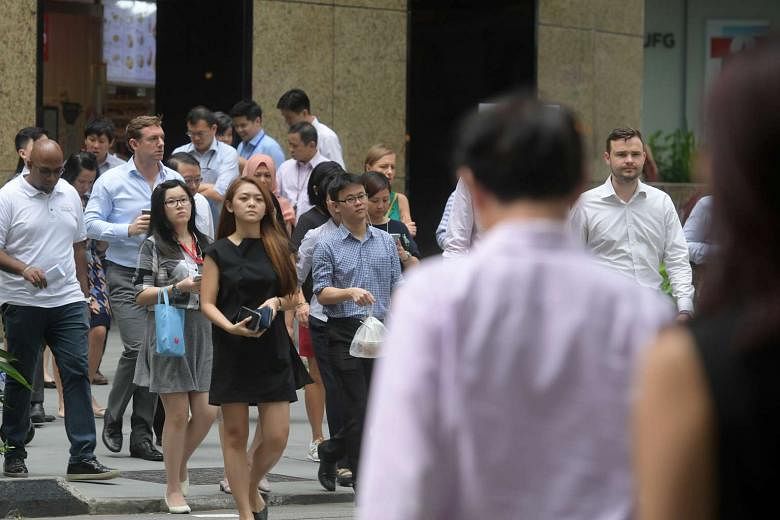SINGAPORE - The Singapore economy has logged robust growth in the first two quarters of this year, but dig deeper and a more worrying picture emerges.
The manufacturing sector was once again the main driver behind economic growth in the second quarter, according to data out on Friday (July 14) from the Ministry of Trade and Industry.
But manufacturing and other trade-related sectors could be hard-pressed to expand at a similar pace for the rest of the year, even as growth across the rest of the economy remains patchy.
The data from Ministry of Trade and Industry (MTI) show that the economy expanded 2.5 per cent in the April to June quarter, according to advance estimates.
This fell short of economist estimates of 2.7 per cent.
In addition, MTI revised first-quarter growth downwards from 2.7 per cent to 2.5 per cent.
Manufacturing expanded by 8 per cent compared with the same quarter a year earlier, extending the 8.5 per cent growth in the previous three months. Growth was supported mainly by the electronics and precision engineering clusters.
An export rally lifted demand for Singapore's shipments of semiconductors and semiconductor manufacturing equipment in the first half of the year.
But manufacturing could be hard-pressed to expand at a similar pace for the rest of the year.
DBS senior economist Irvin Seah noted that the electronics rally "is showing some signs of lethargy of late".
Manufacturing, which makes up a fifth of the economy, expanded for the 10th straight month in May. But there are signs that this pickup may be tapering off - May's expansion was not only slower than in April, but also fell short of economist forecasts.
"Though a contraction is not expected in the near term, the...semiconductor billings, and shipments data are hinting of some side-way moves in the broader manufacturing output trend," added Mr Seah.
Outside manufacturing, growth in rest of the economy - in particular, the services sector which employs the bulk of workers here - remains patchy.
Services, which makes up two-thirds of the economy, grew a tepid 1.7 per cent in the second quarter, slightly faster than the 1.4 per cent growth in the previous quarter. Growth was supported primarily by trade-related sectors which benefitted from stronger export demand, such as transportation and storage.
While trade-related segments have boomed, others have been doing less well, especially those dependent on local demand.
Clusters like retail and food and beverage continue to face headwinds - besides slower demand, retailers are also contending with longer-term challenges like the rise of e-commerce.
Construction firms are also struggling.
The construction sector shrank 5.6 per cent in the second quarter, extending a 6.1 per cent contraction in the preceding quarter. The sector was weighed down by a weakness in both private sector and public sector construction activities.
"While the advance estimates have fallen short of our expectation and we reckon that they will be revised upward, the latest set of figures is broadly consistent with our view that the pace of growth could be tepid going forward," Mr Seah said, noting that tighter monetary policy in the US and slowing growth in China could weigh on the outlook for Singapore's economy in the second half.


